(Sept 15) This figure of an oni is the first thing you see when you emerge from the Noboribetsu train station.

Oni are the mascots of the Noboribetsu hot springs resort and you see them everywhere.
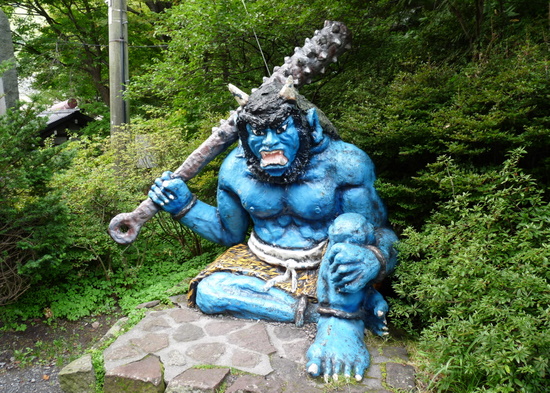

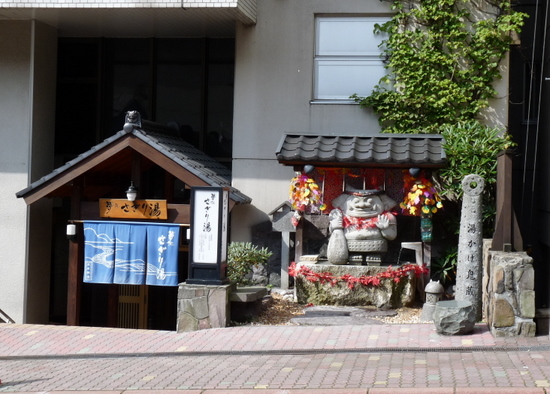
This can be a bit unnerving to Western visitors since, save for the lack of cloven hooves, they look exactly like the Western concept of devils.
Even in most Japanese folklore the oni are the bad guys: big, stupid, hostile, bad-tempered and extremely dangerous. As mountain spirits they are associated with some of the most dangerous forces of nature, including volcanoes and earthquakes. But in a town like Noboribetsu, which owes its entire existence to volcanic hot springs, it is probably natural that they are viewed more favorably. (And in any case it entertains the tourists.)
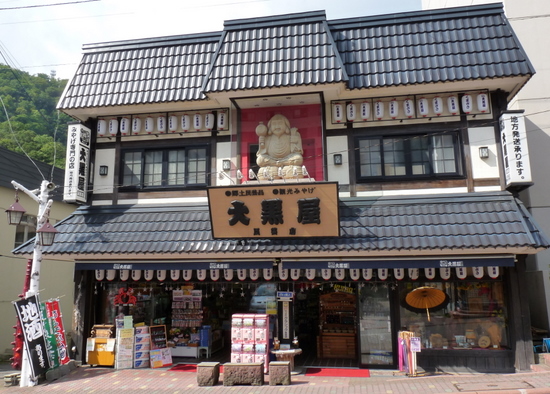
The Dai-ichi Takimotokan is the oldest and most famous of the resort’s ryokans.

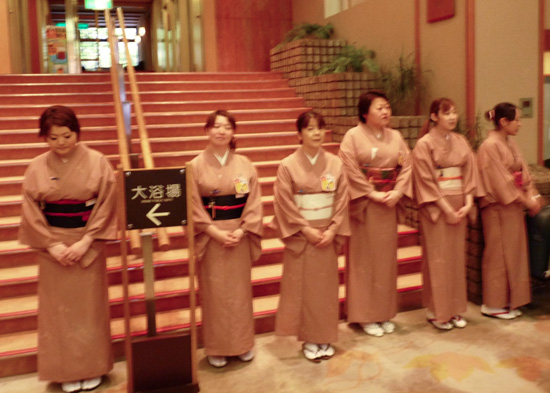
Posters inside the Takimotokan show the history of the ryokan, which was founded in 1858. The picture below shows what it looked like in 1891.
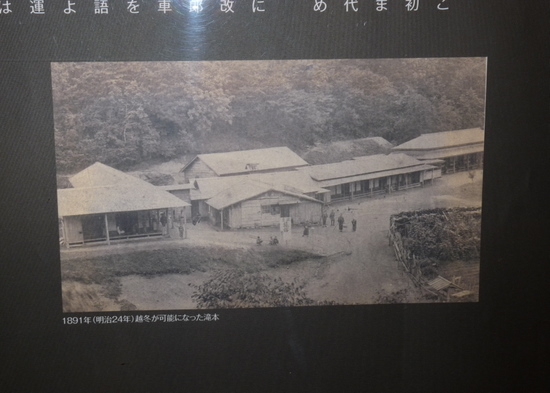
Kinzo Takimoto is said to have built the spa because his wife suffered from a skin disease. This must be his son, I think.

This poster shows the Takimotokan’s famous baths, which are very luxurious.
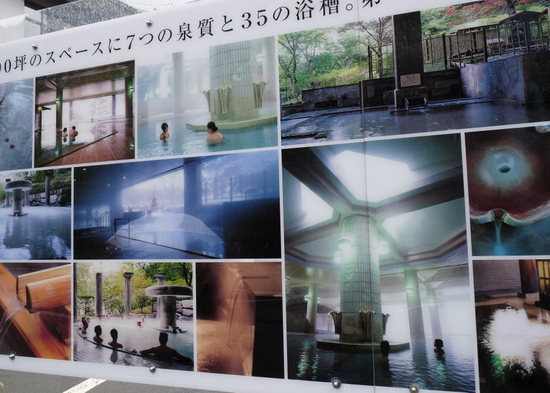
For obvious reasons I can’t show you real pictures of the baths. I will say that if you get your notion of onsen baths from watching anime, you probably have a rather distorted idea of them. For some reason onsen baths in anime are always outdoors, lined with stones, with the men’s and women’s baths separated by a rickety wooden fence with knotholes.
All of the onsen baths that I have seen are indoors and resemble regular public baths (for an anime depiction of regular public baths consider Strawberry Marshmallow.) The most noticeable difference is that the bath water smells slightly of sulfur.
As with all public baths, you are expected to sit down at one of the little showers and wash all the dirt off your body before entering the bath. (Westerners would do well to be extra conscientious about this to counteract the rumors that westerners have poor personal hygiene.) At a hot springs bath you are also supposed to rinse yourself off after leaving the bath, though many locals just seem to give themselves a cursory splash of fresh water.
The large windows of the Takimotokan’s baths look out over the Jigokudani (Hell Valley.)

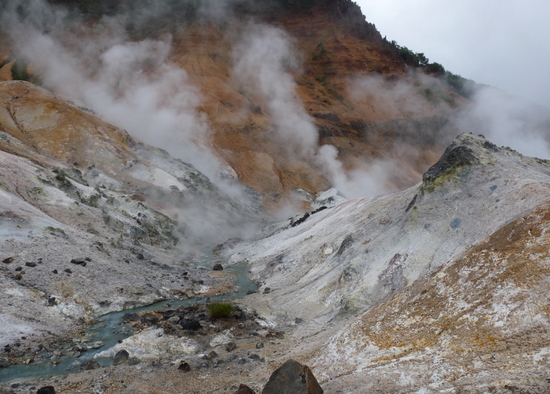
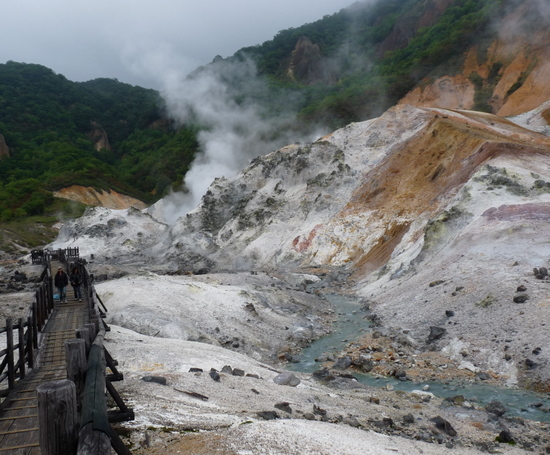
One of the most popular attractions of Hell Valley is the Tessen (Iron Spring), a little geyser that erupts occasionally to the delight of tourists.
(I don’t think Yellowstone needs to worry about the competition.)
The Oyunumagawa looks like an ordinary mountain stream, except for the steam.
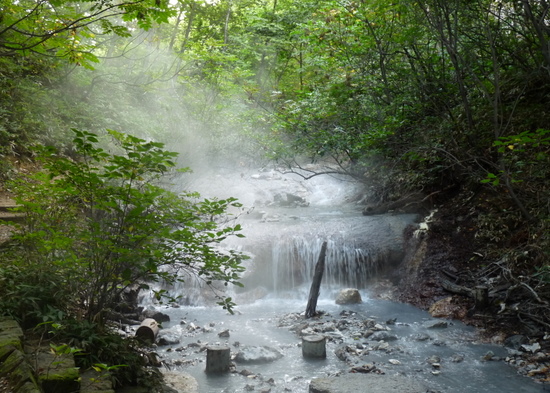
Actually it cools fairly quickly, forming what are considered “natural footbaths.”
Mt. Hiyori overlooks two hot ponds.
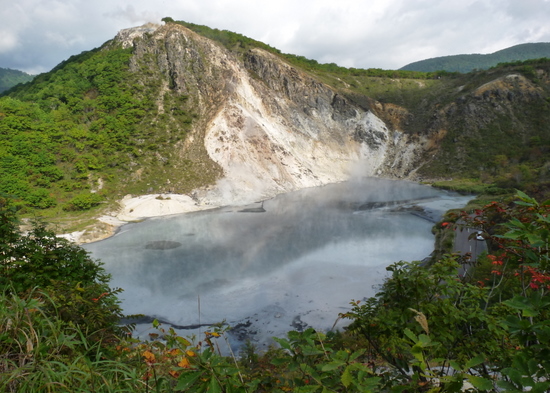

In the lobby of the Dai-ichi Takamotokan is a gold pillar that presents an animated puppet show every hour.
This appears to be a variation of the well-known story of Momotarou the Peach Boy, who sailed with his friends the dog, the monkey and the pheasant to Onigashima (Oni Island) in order to defeat the oni and take their treasure. However in this version he seems to have made friends with the oni.
The Karakuri, just down the street from the Takimotokan, is an even hokier animated attraction.
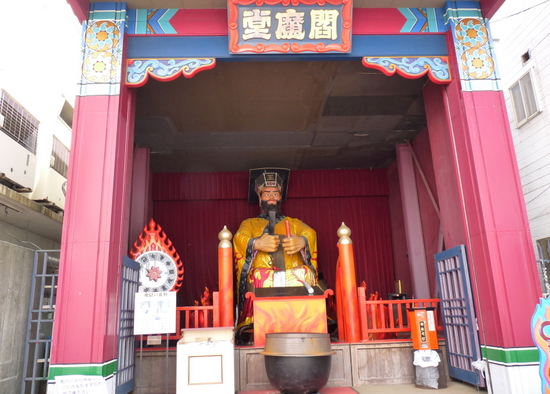
I presume this represents Enma, the Judge of the Dead.


Needless to say, it’s the place that Koyomi Mizuhara visited.
The sulphurous deposits are just like those in Saratoga Springs State Park, where small geysers erupt and smell like sulphur.